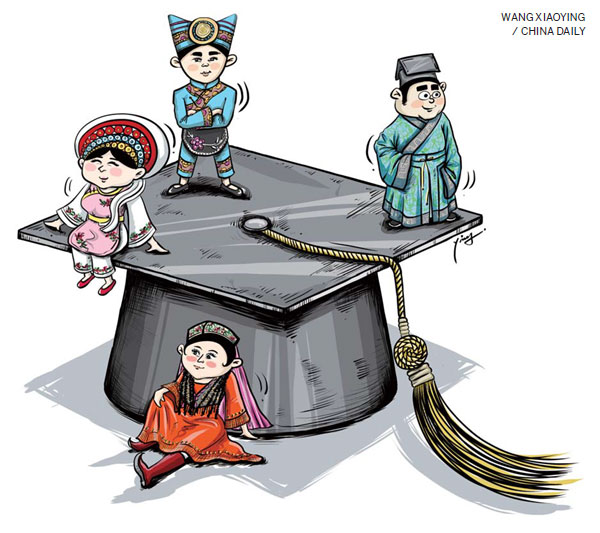 |
Clothes make the man and preserve tradition as well. When we use clothing to connect to the past, it is important not to let it divide us in the present.
A recent graduation ceremony made news not because of who made the speeches or what was said, but because of what everyone wore.
The event at Jiangsu Normal University drew the nation's attention when photos surfaced online of the graduates, their teachers and even invited guests, including officials from the Ministry of Education, donning the traditional garb known as the Hanfu.
My first impression was that the Hanfu, which literally means 'Han clothing', bears a vague resemblance to the traditional graduation outfit, with its black gown and square academic bonnet.
I'm sure most Westerners would have viewed it as a Chinese variation of Western style.
But the Hanfu dates back a couple of thousand years. The "Han" in Hanfu refers to the Han people, the largest ethnic group in China, which accounts for 92 percent of the country's population, and 19 percent of the entire global population.
What the Han wear today is not that different to the clothing style of the rest of the world.
We tend to put on a Western-style suit on formal occasions.
A grassroots movement to revive the Hanfu, active in certain quarters, is an effort to assert Han people's ethnic identity.
So why can't we dress like our ancestors for weddings and funerals, and graduation ceremonies for that matter?
The envy is more poignant when you look at China's ethnic minorities and their colorful costumes, constantly on display in television galas.
I'm a Han but I've never worn a Hanfu. I don't even have one, nor do any of my family.
But I can totally understand the pride and the urgency of some of my fellow Hans who have jumped onto the Hanfu revival bandwagon.